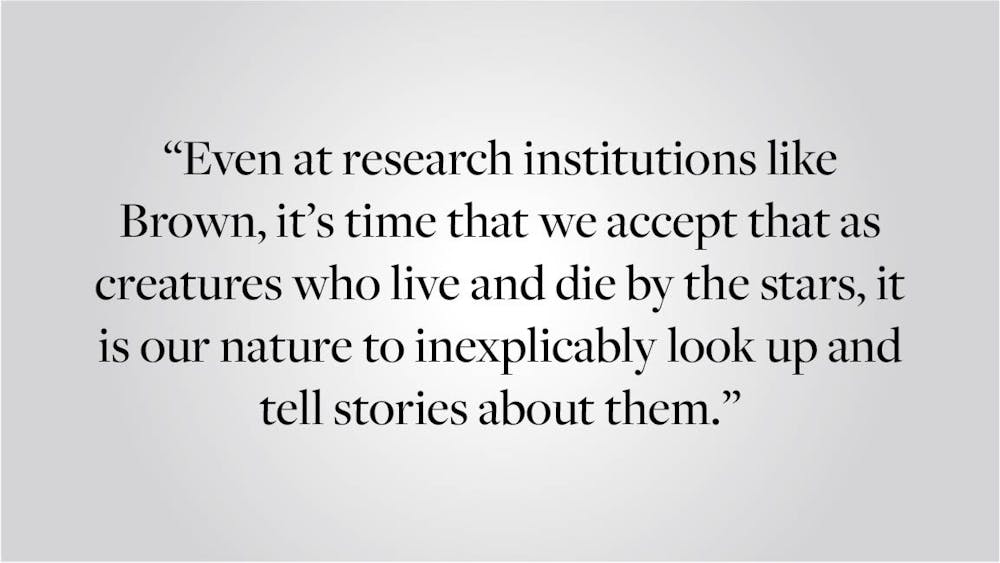It’s human nature to see ourselves as deeply connected to the heavens, from astronomy to astrology. However, society views ways of conceptualizing this connection very differently: For example, astronomy is respected due to its scientific basis, while those who partake in astrology are often treated with disdain. At the end of the day, humanity’s relationship with the stars is powerful both scientifically and spiritually, and we should not shame people for how they choose to express this connection.
The earliest astronomers identified pictures and stories from human life in random arrangements of stars, which we now know as constellations. In addition, nearly every religion from Mesopotamian polytheism to modern Christianity has some references to the stars. Astrology is perhaps the most prevalent example of humans finding a connection between themselves and the stars: To this day, many believe that personalities and emotions are impacted by the night sky. Others simply use it as a way of better understanding themselves and others — I, a Pisces, am expected to be “a deep well of human emotion.”
Psychology tells us that the human mind can be affected by the motion of our nearest star, the sun — think Seasonal Affective Disorder and its more mild cousin, subsyndromal Seasonal Affective Disorder. One study found that these weather-based variations in mood affect 32.9% of students in New England colleges, and women are often more susceptible. Seasonal Affective Disorder presents itself as a feeling of hopelessness in the winter months, with dramatic mood improvement when the weather turns warm again. In a nutshell, our moods can be affected by the position of the sun.
To this day, we are still studying our connection to the stars from different perspectives. It makes sense that this way of thinking has emerged so frequently throughout human history. At the end of the day, stars are at the very core of human existence: The sun sustains life and holds us tethered to this region of the universe, while other stars once guided us over long distances and now help us to understand our position in space. Religious references to stars, Seasonal Affective Disorder and even astrology are all just reflections of the human need to rationalize something as grand as being composed of star matter and sustained by starlight.
However, there are inconsistencies in how these different connections are viewed and treated by society. Is the belief that we are connected to the stars noble or foolish? A scientific fact, a marker of faith or a sign of vapidness and superficiality?
Some connections to the stars are approved of and even encouraged. Astronomy is widely respected and trusted due to its use of the scientific method. Religious connections to the night sky — the concept of heaven, the Star of Bethlehem and countless more — are generally accepted. Rarely do I hear a friend scorn someone simply because their faith includes claims about the stars and the night sky.
Yet, other forms of connection are looked down upon by society. Disdain toward people who partake in astrology, even recreationally, is frequent and obvious. Dislike of astrology is alive and well at Brown, too. Mocking the practice is a classic joke on campus, and even I’ve dropped the classics — “Mercury is in Gatorade right now” and “it’s because you’re a Capri-Sun” — once or twice. Furthermore, Seasonal Affective Disorder seems to be poorly handled and acknowledged on college campuses, as evidenced by the countless articles in other college newspapers on the issue. Like most other forms of depression, it can also be wrongly labeled a sign of weakness in those who experience it.
The cause of these discrepancies could be rooted in prejudices in society. There is an argument that dismissal of astrology might arise due to its relative popularity among people who identify as women and LGBTQ+. A similar argument could be used for seasonal depression — the stigma of mental health issues, a general disregard for the wellness of college-age people and the fact that SAD is more prominent in women could be potential factors.
Ultimately, breaking down these stigmas means addressing countless power dynamics. This doesn’t happen overnight. But if you’ve read my past columns, you’d know that I’m a fan of romanticizing the little things about life: the small things we overhear in passing or the nuances of enjoying Lucky Charms marshmallows. So it may not come as a surprise that this time, I’m here to acknowledge that it’s okay to romanticize the stars, in any way you see fit, in spite of judgment.
Even at research institutions like Brown, it’s time that we accept that as creatures who live and die by the stars, it is our nature to inexplicably look up and tell stories about them. We might as well choose, as have before us, to approach our connection to the stars from whatever creative, romantic or spiritual perspective we’d like without shame. As Vladimir Nabokov wrote in “Lolita”: “And the rest is rust and stardust.”
Eva Schiller ’25 can be reached at eva_schiller@brown.edu. Please send responses to this opinion to letters@browndailyherald.com and other op-eds to opinions@browndailyherald.com.



